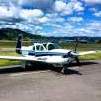Help Troubleshooting Fluctuating Fuel Pressure
-
Members Online
- Utah20Gflyer
- RescueMunchkin
- BrentS
- Griswold
- MikeOH
- madjano
- Rwsavory
- Ragsf15e
- sandeepdutta
- flyfast
- 1980Mooney
- TCC
- mooney_flyer
- Lax291
- birdofjoy
- pipinai
- finnicky7
- CalebH
- toto
- Ibra
- Crawfish
- donkaye
- xkzqwh
- christaylor302
- aviatoreb
- N201MKTurbo
- Jcmtl
- Grumpy
- 00-Negative
- 201guy
- Aaviationist
- 928kc
- Fritz1
- JeffPug


Recommended Posts
Join the conversation
You can post now and register later. If you have an account, sign in now to post with your account.